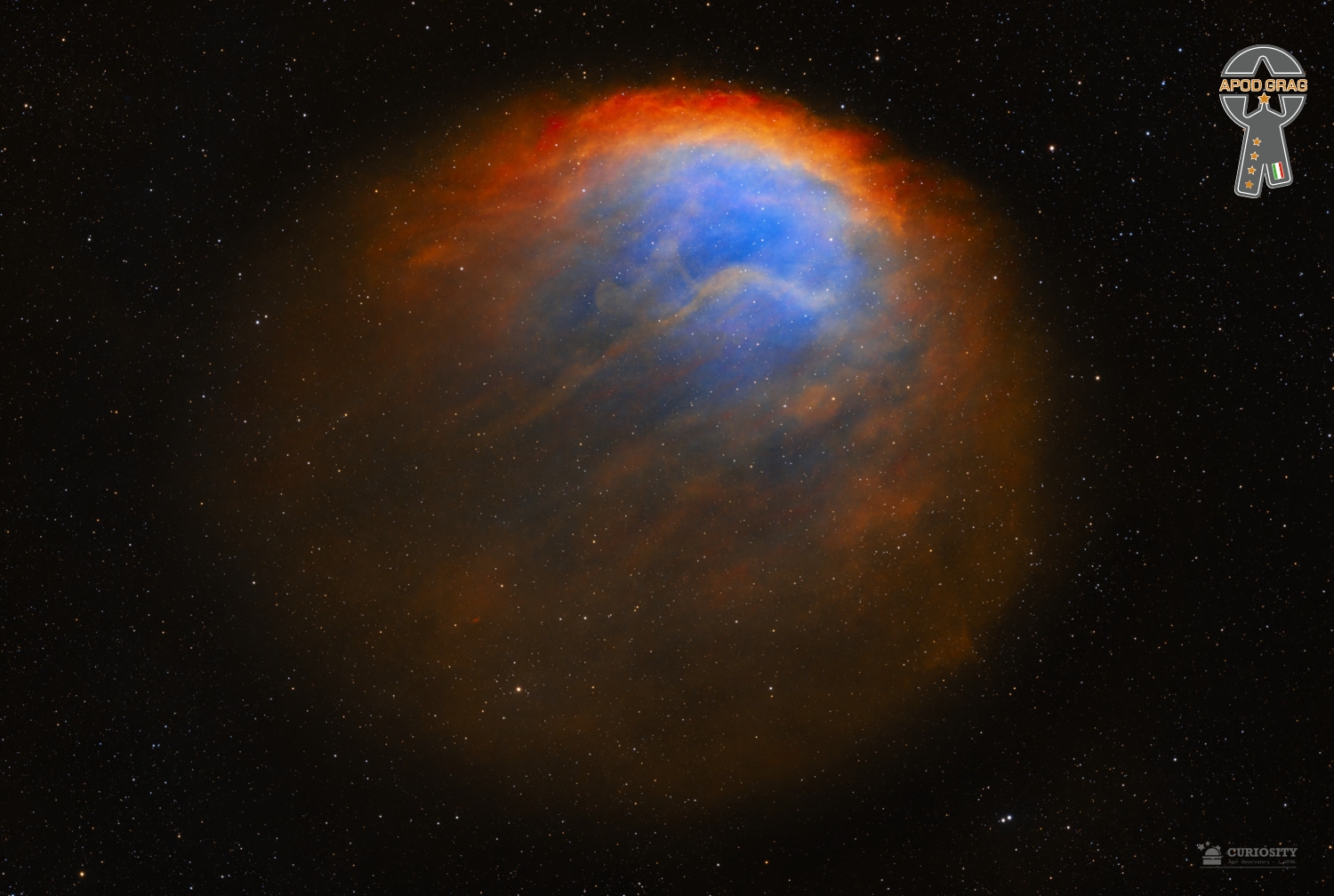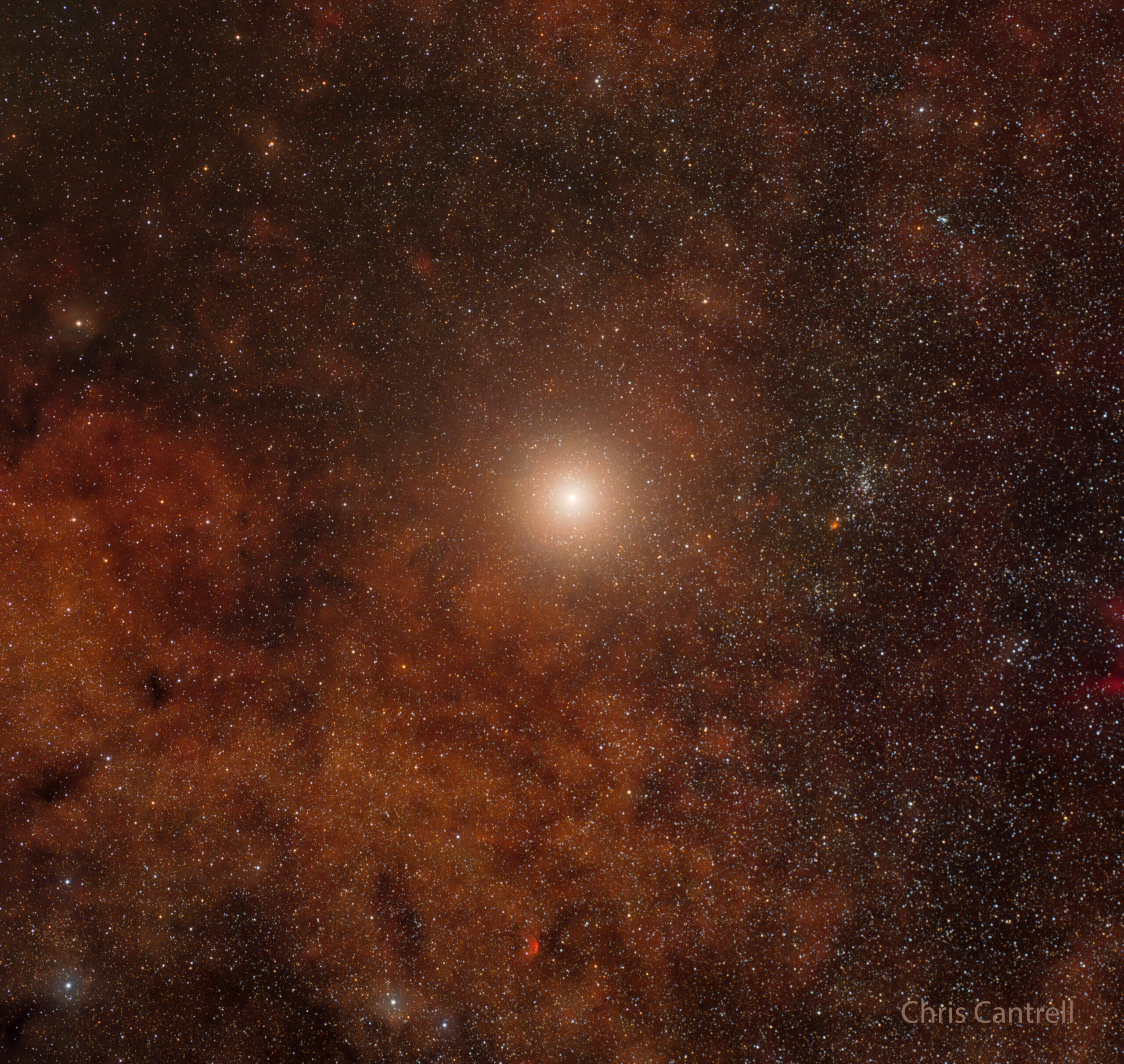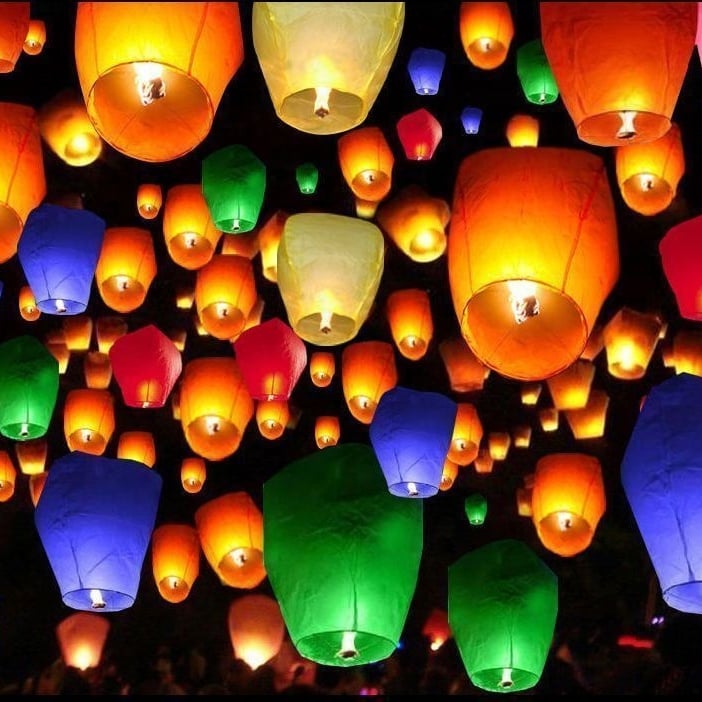Blog
Near the outskirts of the Small Magellanic Cloud, a satellite galaxy roughly 200 000 light-years from Earth, lies the young star cluster NGC 602, which is featured in this new image from the NASA/ESA/CSA James Webb Space Telescope. This image includes data from Webb’s NIRCam (Near-InfraRed Camera) and MIRI (Mid-InfraRed Instrument). The local environment of this cluster is a close analogue of what existed in the early Universe, with very low abundances of elements heavier than hydrogen and helium. The existence of dark clouds of dense dust and the fact that the cluster is rich in ionised gas also suggest the presence of ongoing star formation processes. This cluster provides a valuable opportunity to examine star formation scenarios under dramatically different conditions from those in the solar neighbourhood. [Image description: A star cluster is shown inside a large nebula of many-coloured gas and dust. The material forms dark ridges and peaks of gas and dust surrounding the cluster, lit on the inner side, while layers of diffuse, translucent clouds blanket over them. Around and within the gas, a huge number of distant galaxies can be seen, some quite large, as well as a few stars nearer to us which are very large and bright.]

John Paul Jones (born John Baldwin; 3 January 1946) is an English musician, songwriter, and record producer who was the bassist and keyboardist for the rock band Led Zeppelin.
He was a session musician and arranger when he formed the band with Jimmy Page in 1968. Jones developed a solo career after drummer John Bonham died and Led Zeppelin disbanded in 1980. He has collaborated with musicians in a variety of genres, including the supergroup Them Crooked Vultures with Dave Grohl, Josh Homme, and Alain Johannes. He was inducted into the Rock and Roll Hall of Fame in 1995 as a member of Led Zeppelin.
more...Stephen Arthur Stills (born January 3, 1945 Dallas, TX) is an American musician, singer, and songwriter best known for his work with Buffalo Springfield, Crosby, Stills & Nash, and Manassas. As both a solo act and member of three successful bands, Stills has combined record sales of over 35 million albums. He was ranked number 28 in Rolling Stone‘s 2003 list of “The 100 Greatest Guitarists of All Time” and number 47 in the 2011 list. Stills became the first person to be inducted twice on the same night into the Rock and Roll Hall of Fame. According to Neil Young, “Stephen is a genius”.
Beginning his professional career with Buffalo Springfield, he composed “For What It’s Worth,” which became one of the most recognizable songs of the 1960s. Other notable songs he contributed to the band were “Sit Down, I Think I Love You“, “Bluebird“, and “Rock & Roll Woman”. According to bandmate Richie Furay, Stills was “the heart and soul of Buffalo Springfield”.
After Buffalo Springfield disbanded, Stills began working with David Crosby and Graham Nash as the trio called Crosby, Stills & Nash (CSN). In addition to writing many of the band’s songs, Stills played bass, guitar, and keyboards on their debut album. The album sold over four million copies and at that point had outsold anything from the three members’ prior bands: the Byrds, Buffalo Springfield, and the Hollies. The album won the trio a Grammy Award for Best New Artist.
Stills’ first solo album, Stephen Stills, earned a gold record and is the only album to feature both Jimi Hendrix and Eric Clapton. Its hit single “Love the One You’re With” became his biggest solo hit, peaking at number 14 on the Billboard Hot 100. Stills followed this with a string of solo albums, as well as starting a band with Chris Hillmancalled Manassas in 1972. In summer 1974, Young reunited with CSN after a four-year hiatus for a concert tour that was recorded and released in 2014 as CSNY 1974. It was one of the first stadium tours and the largest tour the band has done to date. CSN reunited in 1977 for their album CSN, which became the trio’s best-selling record. CSN and CSNY continued to have platinum albums through the 1980s.
more...John Jenkins (January 3, 1931 – July 12, 1993) was an American jazz saxophonist.
Born in Chicago, Jenkins initially studied clarinet in high school but switched to saxophone after six months on the instrument. He played in jam sessions led by Joe Segal at Roosevelt College from 1949 to 1956. He played with Art Farmer in 1955 and led his own group in Chicago later that year. In 1957, he played with Charles Mingusand recorded two albums as a leader. He played as a sideman with Johnny Griffin, Donald Byrd, Hank Mobley, Paul Quinichette, Clifford Jordan, Sahib Shihab, and Wilbur Ware in the late 1950s and early 1960s, but essentially dropped out of music after 1962, aside from a few dates with Gloria Coleman.
more...Herbert Horatio Nichols (January 3, 1919 – April 12, 1963) was an American jazzpianist and composer who wrote the jazz standard “Lady Sings the Blues“. Obscure during his lifetime, he is now highly regarded by many musicians and critics.
He was born in San Juan Hill, Manhattan, New York, United States, to parents from St. Kitts and Trinidad, and grew up in Harlem. During much of his career, he took work as a Dixieland musician while also pursuing the more adventurous kind of jazz he preferred. He is best known today for music that combines bop, Dixieland, and music from the Caribbean with harmonies from Erik Satie, Béla Bartók and other modernist composers.
more...Compared to other toques, flamenco fandangos have a shorter rhythmic cycle that may feel more familiar to musicians trained in classical or other Western music styles. Fandangos are an early form of flamenco music, influenced from Arab-Moorish music and Portuguese fado music. Flamenco Fandangos are generally festive and upbeat.
Fandangos have a 3/4 rhythm (previously 6/8, now 3/4 or 3/8), with an accent on the first beat. Most Fandangos are very metric and appropriate for dance. A common compás that can be felt is made up of 12 beats (2×6). However, others may have more of a free-form feeling (known as en toque libre or “very freely”).
There’s also a variety of regional Fandangos, known as fandangos locales, each with their own style and character.
more...Little Smokey Smothers (January 2, 1939 – November 20, 2010 Tchula, MS) was a Chicago blues guitarist and singer. He played with the Paul Butterfield Blues Band and played with other Chicago blues musicians in the 1960s, then left music for most of the 1970s. He returned to music in the late 1970s and continued performing until his death in 2010.
His elder brother was the bluesman Otis “Big Smokey” Smothers (died 1993), with whom he was sometimes confused.
more...Hisao Oma “Isao” Suzuki (鈴木 勲, Suzuki Isao, 2 January 1933 – 8 March 2022) was a Japanese jazz double-bassist.
Born in Tokyo, Japan, Suzuki learned to play bass on United States military bases, and played early in his career with Shotaro Moriyasu, Hidehiko Matsumoto, and Sadao Watanabe. He led his own ensemble in Tokyo from 1965–1969, also performing with Hampton Hawes in 1968. He moved to New York City from 1969 to 1971, playing with Ron Carter, Paul Desmond, Ella Fitzgerald, Jim Hall, Wynton Kelly, Charles Mingus, Thelonious Monk, and Bobby Timmons. Returning to Japan, he played with Kenny Burrell and Mal Waldron in addition to his own ensembles. Later in the 1970s, he began expanding his instrumental repertoire, playing cello and piccolo bass. He was a cofounder of the Japanese Bass Players Club with Hideto Kanai, and opened a jazz club in Osaka in 1987.
more...This image captures Sh2-216, the closest known planetary nebula to Earth, located at a distance of approximately 129 parsecs (424 light-years). With a diameter of 1.6° in the sky, Sh2-216 is one of the largest and oldest planetary nebulae known. Its vast, faint shell spans nearly 10 light-years, representing the ejected outer layers of its progenitor star, which is the white dwarf WD 0439+466.
Something interesting about this region is how Sh2-216 interacts with the interstellar medium (ISM). The nebula’s upper rim glows brightly, marking the point where the expanding shell meets the ISM. This interaction compresses and shapes the nebular gas, forming complex filamentary structures visible in H-alpha emissions. These structures are influenced by both the ISM magnetic field and the dynamics of the nebular expansion.
To capture this faint PN, 55 hours of exposure have been required using A f4,4 refractor at 414mm focal length. The image has been taken during October, November and December 2024 from the Curiosity observatory located in Àger (Catalonia), under a B3 sky.

Ari Brown (born February 1, 1944) is an American jazz tenor saxophonist and pianist.
Brown grew up in Chicago and attended Wilson College, where he met musicians such as Jack DeJohnette, Henry Threadgill, Roscoe Mitchell, and Joseph Jarman. He played piano in R&B and soul outfits into the 1960s, then switched to saxophone in 1965. He joined the AACM in 1971, and also played with The Awakening in the early 1970s. In 1974 he lost several teeth in a car crash, and temporarily switched to piano again until he recovered. He played sax later in the 1970s with McCoy Tyner, Don Patterson, and Sonny Stitt. In the 1980s, he started his own quintet, and also worked with Lester Bowie, Von Freeman, Bobby Watson, and Anthony Braxton, and in 1989 he became a member of Kahil El’Zabar‘s trio. In 1995, he recorded his first album as a leader, titled Ultimate Frontier, and released by Delmark Records.
more...Frank L. Marocco (January 2, 1931 – March 3, 2012) was an American piano-accordionist, arranger and composer. He was recognized as one of the most recorded accordionists in the world.
Born in Joliet, Illinois Frank Marocco grew up in Waukegan, near Chicago. At the age of seven years, his parents enrolled him in a six-week beginner class for learning to play the accordion.
more...Nick Fatool (January 2, 1915 – September 26, 2000) was an American jazz drummer. He was born in Millbury, Massachusetts, United States. Fatool first played professionally in Providence, Rhode Island, which he followed with time in Joe Haymes‘s band in 1937 and Don Beston‘s in Dallas soon after. In 1939, he played with Bobby Hackett briefly, and then became a member of the Benny GoodmanOrchestra. He became one of the most visible drummers of the 1940s, playing with Artie Shaw (1940–41), Alvino Rey (1942–43), Claude Thornhill, Les Brown, and Jan Savitt. In 1943, he moved to Los Angeles and took work as a session musician, recording profusely. Credits include Harry James, Erroll Garner (1946), Louis Armstrong (1949, 1951), Jess Stacy, Tommy Dorsey, Matty Matlock, John Scott Trotterand Glen Gray. He began an association with Bob Crosby, playing with him regularly between 1949 and 1951 and occasionally with Crosby’s Bobcats into the 1970s.
more...The closest star system to the Sun is the Alpha Centauri system. Of the three stars in the system, the dimmest — called Proxima Centauri — is actually the nearest star. The bright stars Alpha Centauri A and B form a closebinary as they are separated by only 23 times the Earth- Sun distance – slightly greater than the distance between Uranus and the Sun. The Alphasystem is not visible in much of the northern hemisphere. Alpha Centauri A, also known asRigil Kentaurus, is the brightest star in the constellation of Centaurus and is the fourth brightest star in the night sky. Sirius is the brightest even though it is more than twice as far away. By an exciting coincidence, Alpha Centauri A is the same type of star as our Sun, and Proxima Centauri is now known to have a potentially habitable exoplanet.

More Posts
- Daily Roots with the Corporation
- Echos of Freedom by George Washington
- The Cosmos with NGC 2359
- Bill Doggett Day
- Machito Day
- World Music with Aly Bain and Phil Cunningham
- Daily Roots with Desmond Riley
- Echos of Freedom by Kahlil Gibran
- The Cosmos with NGC 6814
- Henry Threadgill Day
- Harold Arlen Day
- World Music with Antonia Jiménez
- Daily Roots with King Horror
- Happy Valentines Day 2019
- Echos of Freedom by Rabindranath Tagore
- The Cosmos with Westerhout 5
- Tim Buckley Day
- Merle Saunders Day
- Fernando Sor Day
- World Music with ALASH

